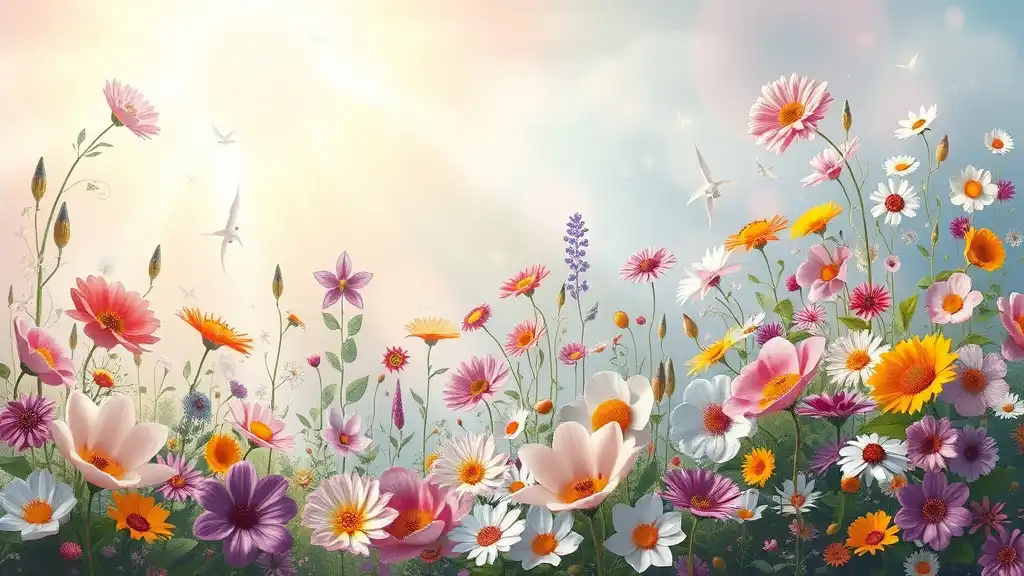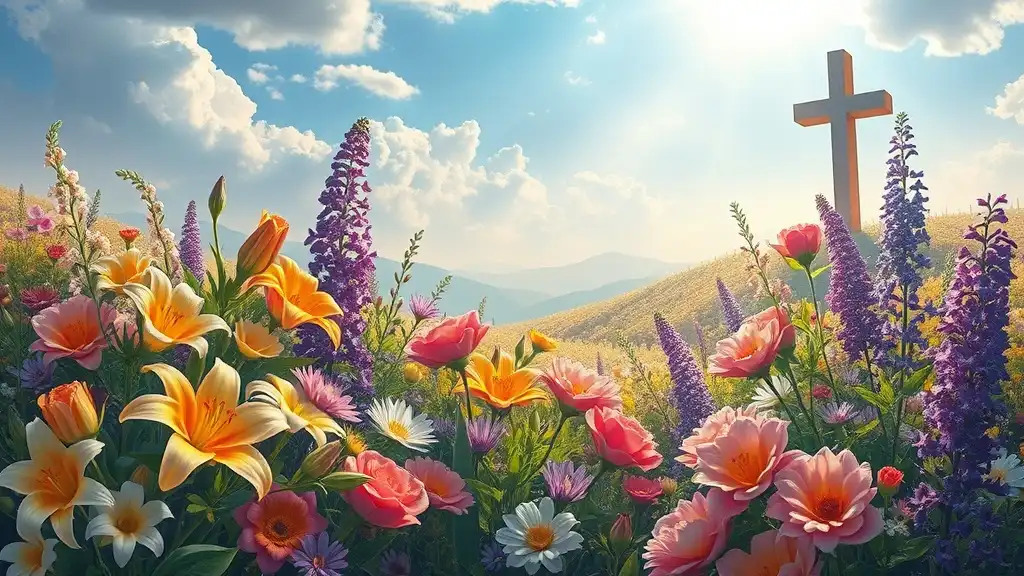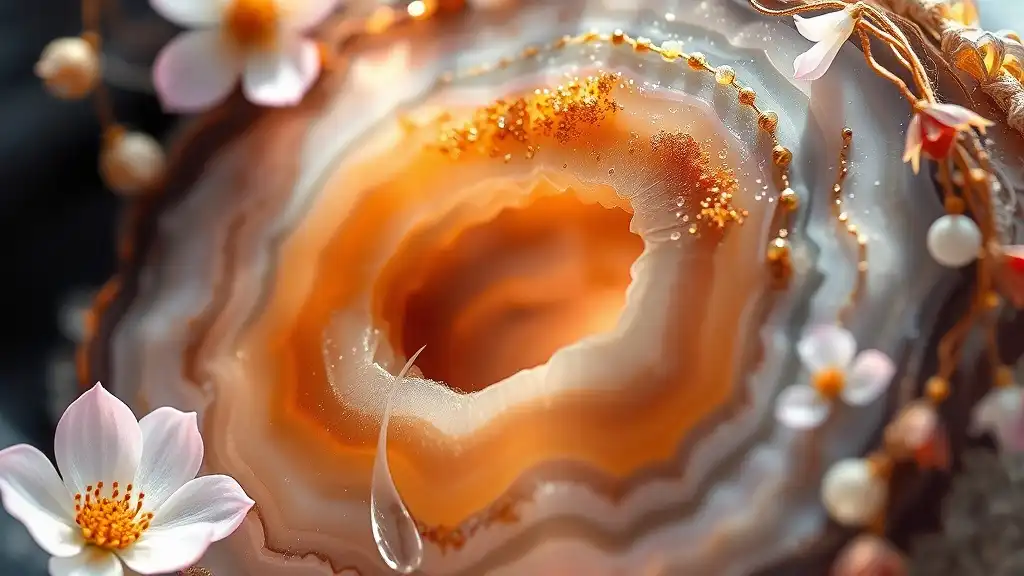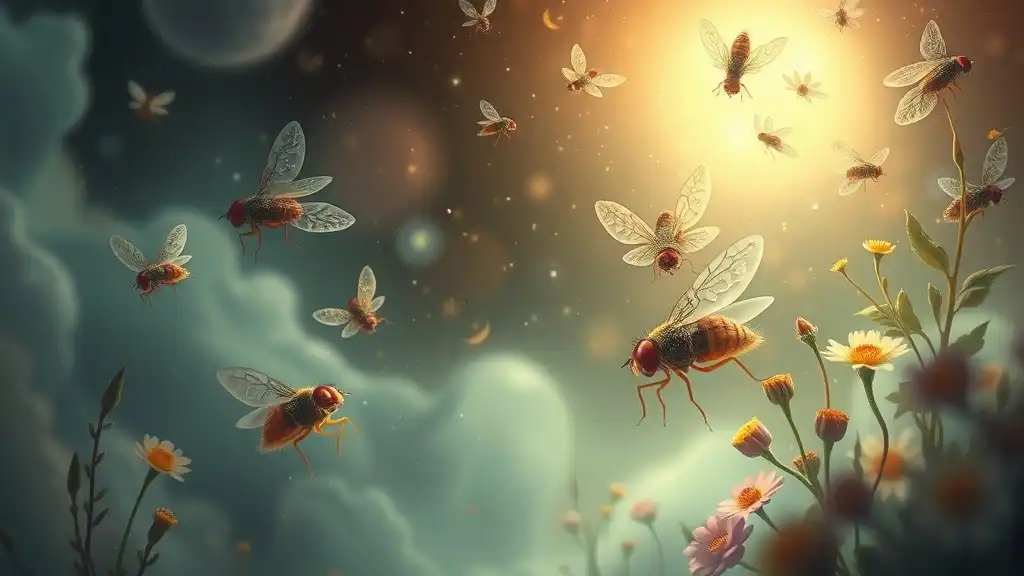Flowers have held a significant place in biblical texts, representing various spiritual meanings and connections to the divine. Through their beauty, fragility, and seasonal cycles, flowers serve as reminders of God’s creation and the deep spirituality intertwined in the natural world. As we delve into the spiritual meanings of flowers in the Bible, we uncover layers of symbolism that invite deeper understanding and connection with our spiritual paths.
The Symbolism of Flowers in the Bible
In biblical scripture, flowers are often portrayed as symbols of beauty, purity, and transience. This inherent symbolism connects believers to the idea that just as flowers flourish and fade, so too do aspects of life manifest and dissolve. Flowers remind us of our impermanence and the need to embrace the present moment, appreciating the beauty that life offers. Furthermore, flowers echo the overarching themes of divine creation — they signify the artist behind all existence and highlight the awe-inspiring aspects of nature.

Notable Flowers Mentioned in the Bible
Lilies
One of the most notable flowers mentioned in the Bible is the lily, particularly referenced in Matthew 6:28-30. Here, Jesus uses the lily’s splendor as a metaphor for the care that God provides to all His creations. The scripture states, “Consider the lilies of the field, how they grow: they neither toil nor spin; yet I tell you that even Solomon in all his glory was not arrayed like one of these.” This connection illustrates the purity and trust in God that believers are encouraged to embody. Lilies, with their delicate beauty, symbolize a call to simplicity, faith, and reliance on God’s providence.
Roses
Roses also hold spiritual significance, often found within the poetic verses of the Song of Solomon (2:1), where they symbolize love and beauty. The rose represents the passion and devotion toward God and each other, showcasing how love transcends the ordinary. From biblical legends to modern sentiment, the rose remains a powerful emblem of emotional and spiritual resonance, weaving through the fabric of worship and love within the scriptures.
Mandrakes
Mentioned in Genesis 30:14-16, mandrakes were highly valued in biblical times for their supposed aphrodisiac properties. The story surrounding Rachel and Leah illuminates the cultural significance of mandrakes, as they represent desire and fertility. Spiritually, mandrakes can symbolize the yearning for fulfillment in various aspects of life, encouraging believers to seek balance in their relationships and personal desires.
Hyssop
Hyssop is celebrated for its cleansing properties, featuring prominently in purification rites as illustrated in Exodus 12:22 and Psalm 51:7. This small yet potent plant symbolizes cleansing and healing, offering a reminder that spiritual renewal is possible. The act of using hyssop conveys a deep sense of spiritual restoration, encouraging believers to seek purity of spirit, as well as the importance of engaging in rituals that promote personal and communal healing.
Almond Blossoms
The almond tree and its blossoms, highlighted in Jeremiah 1:11-12, signify God’s vigilance and the concept of new beginnings. The verse metaphorically likens God’s watchfulness to the almond tree’s early flowering. In this sense, almond blossoms embody the spirit of renewal and divine governance, prompting believers to trust in the timing of their own spiritual awakenings and growth.

Flowers as Metaphors for Spiritual Growth
The Parable of the Sower
One pivotal biblical story is the Parable of the Sower, illustrating how seeds represent the potential for growth and transformation. When considering flowers in this context, we recognize that flourishing blooms emerge from a foundation of nurturing and care. Just as the garden requires tending, so too does our faith and spiritual journey thrive when we cultivate it with intention, patience, and love.
The Fruit of the Spirit
Moreover, there is a profound relationship between flowers and the Fruit of the Spirit. Just as flowers bloom with diverse beauty, each offering unique qualities, the Fruit of the Spirit encompasses virtues such as love, joy, peace, kindness, and self-control. When we recognize that flowers exemplify these spiritual qualities, they remind us to cultivate these traits within ourselves and our communities, creating an environment where spiritual flourishing can thrive.

Flowers in Worship and Rituals
Symbolic Use in Ceremonies
Historically, flowers have played a vital role in worship across various religious traditions. In both Jewish and Christian rituals, flowers symbolize grace, beauty, and the sacredness of life. From wedding ceremonies to religious feast days, their presence enhances the spiritual atmosphere, inviting deeper connection with the divine.
Floral Offerings
Flowers hold additional significance as offerings and dedications. Presenting flowers to God or at sacred sites serves as a visual representation of love and gratitude. Through these gestures, believers express reverence and acknowledge the intricacies of creation, promoting an understanding that worship involves both physical and emotional expressions.

The Meditative Aspect of Flowers
Mindfulness and Nature
In our increasingly busy lives, flowers provide an invitation to embrace mindfulness and connection with nature. Observing a flower in full bloom can evoke a sense of serenity, encouraging contemplative practices. When we take the time to appreciate the intricate details of flowers, we connect with the beauty of creation, fostering a deeper appreciation for the divine complexities within simplicity.
Using Flowers in Prayer
Incorporating flowers into prayer routines can enhance spiritual practices. Placing fresh blooms in sacred spaces can serve as visual reminders of God’s beauty and presence. Praying with flowers encourages us to reflect on the cycles of life—birth, growth, and decay—and to express gratitude for each moment, enhancing our awareness of the spiritual journey.

Conclusion
As we reflect on the spiritual meanings of flowers in the Bible, we uncover the intricate ways in which these blooms symbolize elements of faith, growth, and divine connection. From the purity of lilies to the healing properties of hyssop, flowers serve as rich metaphors for navigating our spiritual paths. By embracing these symbols and their implications, we cultivate a deeper relationship with creation and nurture our communal ties to the Divine.



















